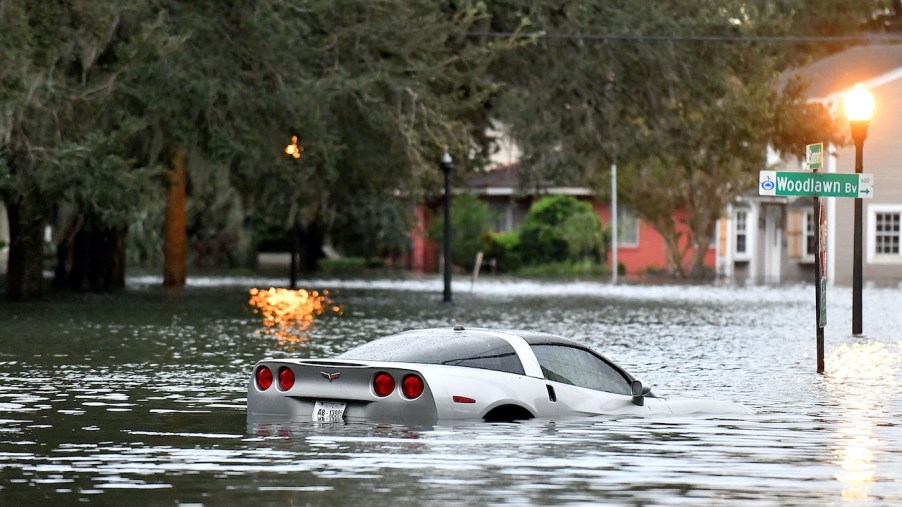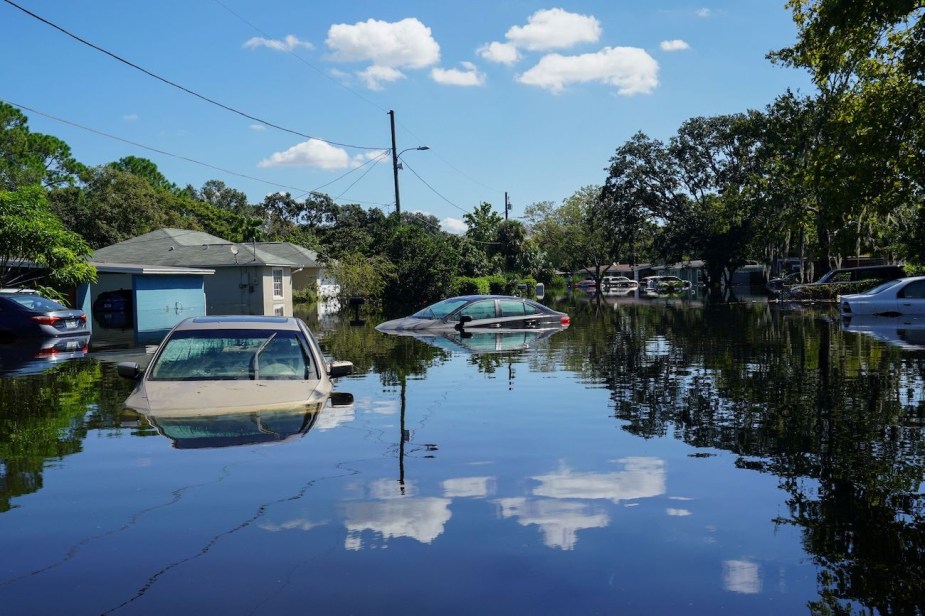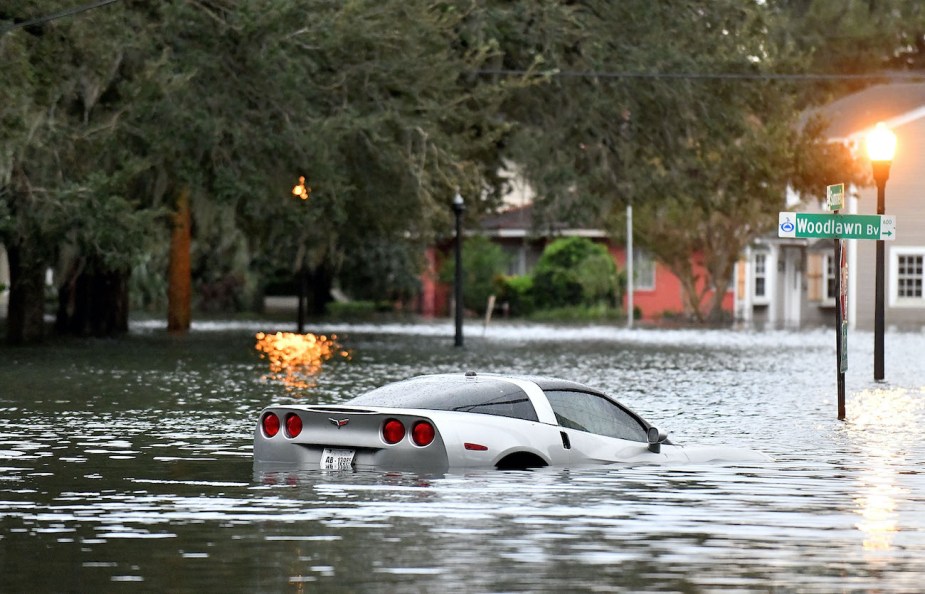
How to Avoid Buying a Used Car Flooded by Hurricane Ian
When shopping for a used car, there are many things to watch out for. Is the vehicle in good condition? Did the previous owners perform proper maintenance on it? Does the price match the value? The list is truly endless if you wish to land the perfect used vehicle. Following Hurricane Ian, there’s another precaution used car buyers must take. Sometimes people take vehicles with water damage due to flooding, especially from hurricanes, and sell them in other states as if nothing ever happened. Here is how to avoid buying a used car flooded by Hurricane Ian.
Hurricane Ian damaged everything, including cars

When Hurricane Ian ripped through Florida, it took everything with it. Unfortunately, people are left without their homes, vehicles, and many other belongings throughout the state. It can sometimes be difficult to detect whether or not a car has damage from water. Once dried out in another location, a skilled laborer can make it so the average buyer can never tell the difference. However, hurricanes like this one and their flooding can often cause permanent damage that you need to watch out for.
If you’re interested in buying a used car in the next few months, watch out for signs of flood damage. According to Car and Driver, Ian flooded parts of North and South Carolina after leaving Florida. That’s at least three states where we’d be very cautious of used cars and their origins. The number of vehicles damaged by Hurricane Ian remains unknown, but CarFax says when Hurricane Ida hit, an estimated 212,000 vehicles were damaged.
You don’t want to buy a flooded vehicle

If a buyer gets their hands on flood-damaged cars, they can make it look like nothing ever happened. Or at least that’s what they think. C/D says once a vehicle is dried and cleaned, it can be challenging to notice submersion damage. However, it is possible to spot a flooded car, even after cleaning and drying. In addition, there are many reasons to avoid buying a used car with water damage.
Teresa Murray, a consumer watchdog at the U.S. Public Interest Research Group, told C/D the following: “You don’t want any part of a flooded vehicle, no matter whether the damage is disclosed and no matter what assurances you get from a seller,” Murray said. “If you suspect a vehicle may have sustained flood damage, move on. Don’t be tempted to roll the dice. You’ll almost surely be buying a headache and just wasting your money.”
Sometimes a buyer will disclose information about flooding. As a result, the used car will be cheaper than non-damaged equivalent models. However, as Murray said, it isn’t worth the trouble.
How to spot a water-damaged car
First, the most obvious way is by searching for visual clues. There are some signs that usually always point to water damage, no matter how significant. For example, moisture inside headlights or taillights, stains on the carpet, and interior discoloration on the headliner, floor, walls, or even seats. In addition, some parts of the car will get rusty with too much moisture. C/D says to check around fasteners and screws where this will happen quickly.
Next, the smell is often a sign of flooding damage. If a used car smells musty, moldy, or something just seems off, it’s probably flood-damaged. Furthermore, the seller is covering something up if the car smells good (because of air fresheners or deodorizers). If that’s the case, there’s a good chance the car would smell bad if they hadn’t taken care of it before you arrived.
Lastly, research the vehicle using the Vehicle Identification Number (VIN). The National Insurance Crime Bureau offers a free searchable database that shows if a car has a salvage title, even if the seller is lying about it. The information would be available if the car was insured when the damage occurred. The National Motor Vehicle Title Information System also offers a VIN-searchable system for historical information about the vehicle. This is important because it can tell you if previous owners registered the car in a state impacted by Hurricane Ian.
CarFax reports also often reveal where a vehicle was registered or received maintenance. We recommend avoiding used cars in Florida or the Carolinas that have since moved to another state, at least for a few months.
Avoid buying used cars flooded by the hurricane
In conclusion, there’s no reason to buy a car with flooding damage from Hurricane Ian. Watch out for many warning signs when researching your next car. Be aware of what stands out with a water-damaged vehicle, and avoid them altogether. Try your best not to be tempted by a low price on a used car with flooding disclosed by the seller. It’s almost never worth sinking money into and will likely create more and more problems down the line.



